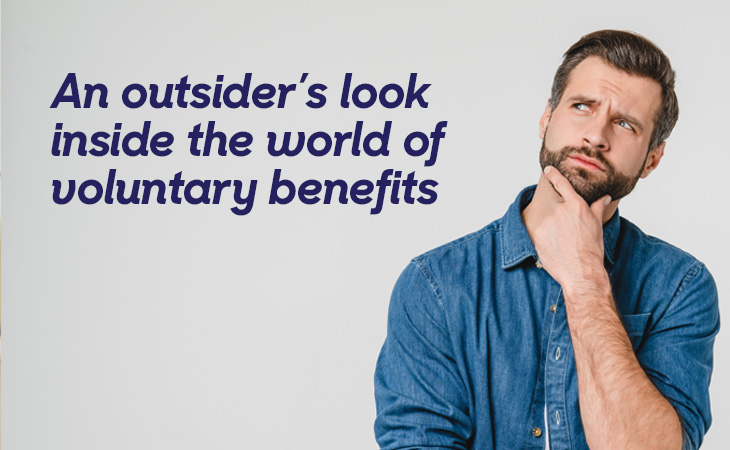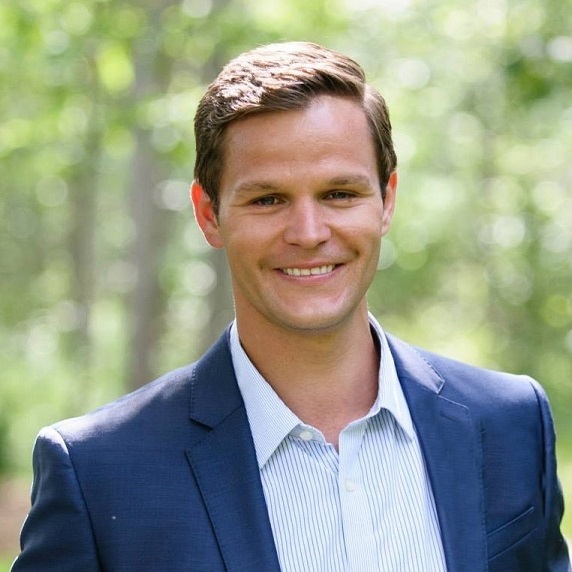Voluntary Benefits
Published by Aaron Meredith on February 16th, 2023
My background is not, strictly speaking, in the world of voluntary benefits. That can be a scary thing to say starting in a sales role where I will, strictly speaking, exclusively sell voluntary solutions here at Trustmark. Nevertheless, what excites me about starting in this new role is that sometimes a fresh look from the outside can make a big difference.
Now, while I haven’t worked in voluntary benefits specifically, I like to think my past has been what I would call “voluntary-adjacent”. In my previous role, I was providing digital solutions to help manage chronic conditions for my clients. I guess you could say that I was focused on the “before” of a health event and now I’m focused a little more on the “after”. As such, I have a few observations as an “outsider” that I hope will be helpful for those of you “inside” the industry.
Voluntary benefits as prevention
As I reference above, I think there’s a tendency to see payments from voluntary products as reactive: something happens to a policyholder and the products respond with money to help ease the burden. But, what I’m seeing now is there’s also a story we can be sharing with policyholders and employers about the ability to be proactive. Wellness benefits are an obvious fit here, but with some products offering benefits for early identification and mental health (which ultimately impacts physical health), I’m seeing carriers like Trustmark taking steps to support policyholders earlier in the process. I’ll also note that the education aspect of a voluntary program: teaching about products and the need for protection or engaging employees in wellness can be a gateway to getting employees to take a more proactive approach.
Not only is this important for employees to protect their own health, but it’s a downstream impact for employers too: fewer healthcare costs, fewer days and hours missed at work and, overall, a more productive workforce. While certainly, the value of voluntary benefits will continue to mostly come from the payments made for health events, with the right products, there’s a great story to be told on the prevention side and one that will resonate with employers.
The value of simplicity
People who live and breathe insurance every day “get” the insurance industry. I don’t think it will come as any great surprise when I say that people outside of insurance, generally, don’t get insurance. In my prior role, I talked to so many people who had HDHPs (or were paying heavily for PPO coverage) – they knew what kind of coverage they had, but they didn’t truly understand how it worked. I think we’ve all heard the stories of people who have been shocked and upset when they had a medical event and were still paying significant out-of-pocket costs.
I think one of the great things we can provide (and that we should emphasize with clients) is the simplicity of voluntary. The fact that voluntary pays cash benefits directly to a policyholder makes a huge difference. They see the check come in and they can use it as they see fit. That’s so much more tangible to a policyholder and so much simpler to understand than medical insurance.
The need for protection
This is maybe less of an eye-opener for anyone inside the industry, but I think it bears repeating after that last point. The need for voluntary products is all but indisputable. Worst of all, if people don’t understand their medical coverage, they’re not prepared for the costs they may face, even with insurance. That education is so desperately needed by employees and interacting personally with clients in my previous role showed me just how many people need protection.
On a more personal level, I’m a family man, I have a wife and two daughters. I think about their health and their healthcare needs and what it would be like if we were caught unawares by a healthcare expense during an already stressful time. Looking at the protection voluntary benefits provide through that lens just brings the need for protection and education into that much sharper focus.
Before I came onboard here at Trustmark, I worked with an executive who had experienced chronic back pain throughout her life. During our time working together she was able to make incredible improvements: trimming back on chiropractor visits, being able to play with her granddaughter, working more comfortably. When it’s all said and done, stories like that are what drive me. I want to help people. I’m excited to find new ways to do that with our broker partners in the world of voluntary and, hopefully, bring a fresh “outsider's” perspective along the way.
Now, while I haven’t worked in voluntary benefits specifically, I like to think my past has been what I would call “voluntary-adjacent”. In my previous role, I was providing digital solutions to help manage chronic conditions for my clients. I guess you could say that I was focused on the “before” of a health event and now I’m focused a little more on the “after”. As such, I have a few observations as an “outsider” that I hope will be helpful for those of you “inside” the industry.

Voluntary benefits as prevention
As I reference above, I think there’s a tendency to see payments from voluntary products as reactive: something happens to a policyholder and the products respond with money to help ease the burden. But, what I’m seeing now is there’s also a story we can be sharing with policyholders and employers about the ability to be proactive. Wellness benefits are an obvious fit here, but with some products offering benefits for early identification and mental health (which ultimately impacts physical health), I’m seeing carriers like Trustmark taking steps to support policyholders earlier in the process. I’ll also note that the education aspect of a voluntary program: teaching about products and the need for protection or engaging employees in wellness can be a gateway to getting employees to take a more proactive approach.
Not only is this important for employees to protect their own health, but it’s a downstream impact for employers too: fewer healthcare costs, fewer days and hours missed at work and, overall, a more productive workforce. While certainly, the value of voluntary benefits will continue to mostly come from the payments made for health events, with the right products, there’s a great story to be told on the prevention side and one that will resonate with employers.
The value of simplicity
People who live and breathe insurance every day “get” the insurance industry. I don’t think it will come as any great surprise when I say that people outside of insurance, generally, don’t get insurance. In my prior role, I talked to so many people who had HDHPs (or were paying heavily for PPO coverage) – they knew what kind of coverage they had, but they didn’t truly understand how it worked. I think we’ve all heard the stories of people who have been shocked and upset when they had a medical event and were still paying significant out-of-pocket costs.
I think one of the great things we can provide (and that we should emphasize with clients) is the simplicity of voluntary. The fact that voluntary pays cash benefits directly to a policyholder makes a huge difference. They see the check come in and they can use it as they see fit. That’s so much more tangible to a policyholder and so much simpler to understand than medical insurance.
The need for protection
This is maybe less of an eye-opener for anyone inside the industry, but I think it bears repeating after that last point. The need for voluntary products is all but indisputable. Worst of all, if people don’t understand their medical coverage, they’re not prepared for the costs they may face, even with insurance. That education is so desperately needed by employees and interacting personally with clients in my previous role showed me just how many people need protection.
On a more personal level, I’m a family man, I have a wife and two daughters. I think about their health and their healthcare needs and what it would be like if we were caught unawares by a healthcare expense during an already stressful time. Looking at the protection voluntary benefits provide through that lens just brings the need for protection and education into that much sharper focus.
Before I came onboard here at Trustmark, I worked with an executive who had experienced chronic back pain throughout her life. During our time working together she was able to make incredible improvements: trimming back on chiropractor visits, being able to play with her granddaughter, working more comfortably. When it’s all said and done, stories like that are what drive me. I want to help people. I’m excited to find new ways to do that with our broker partners in the world of voluntary and, hopefully, bring a fresh “outsider's” perspective along the way.
